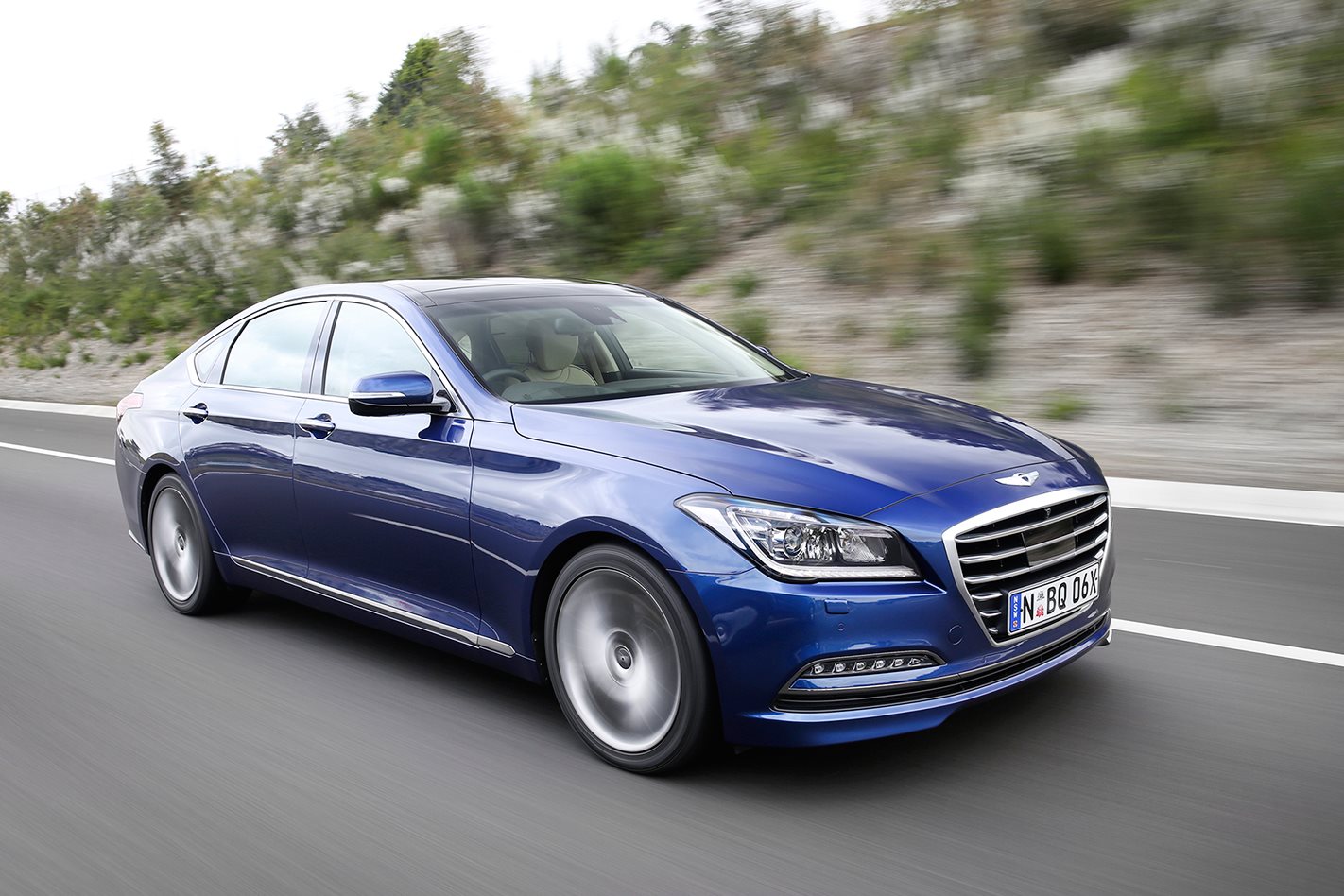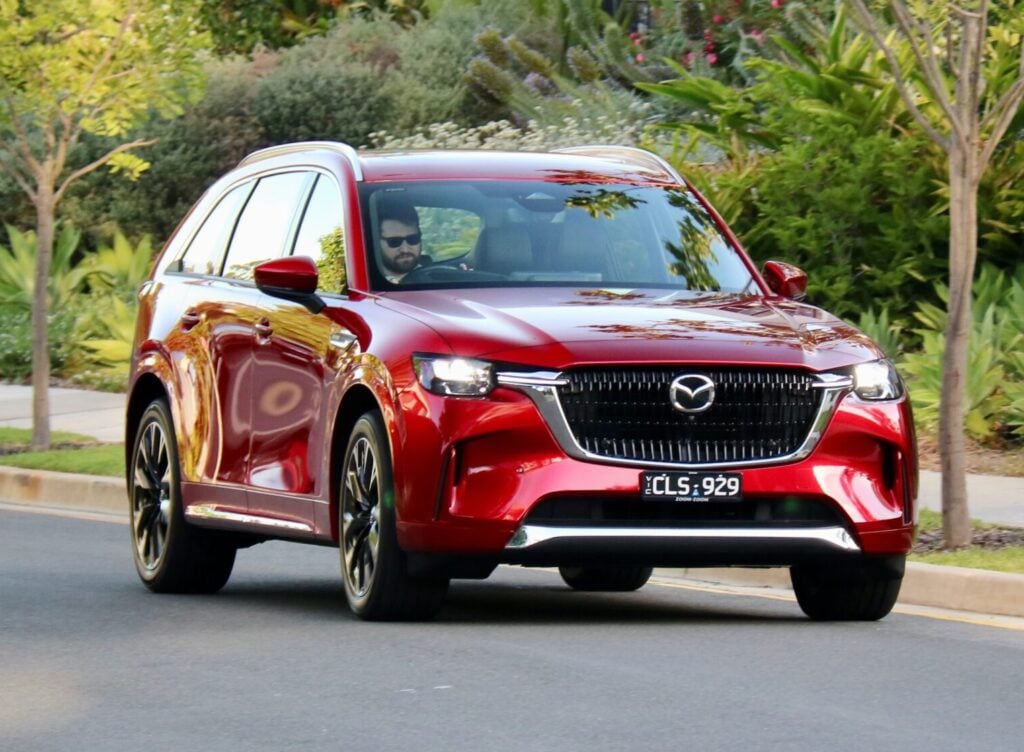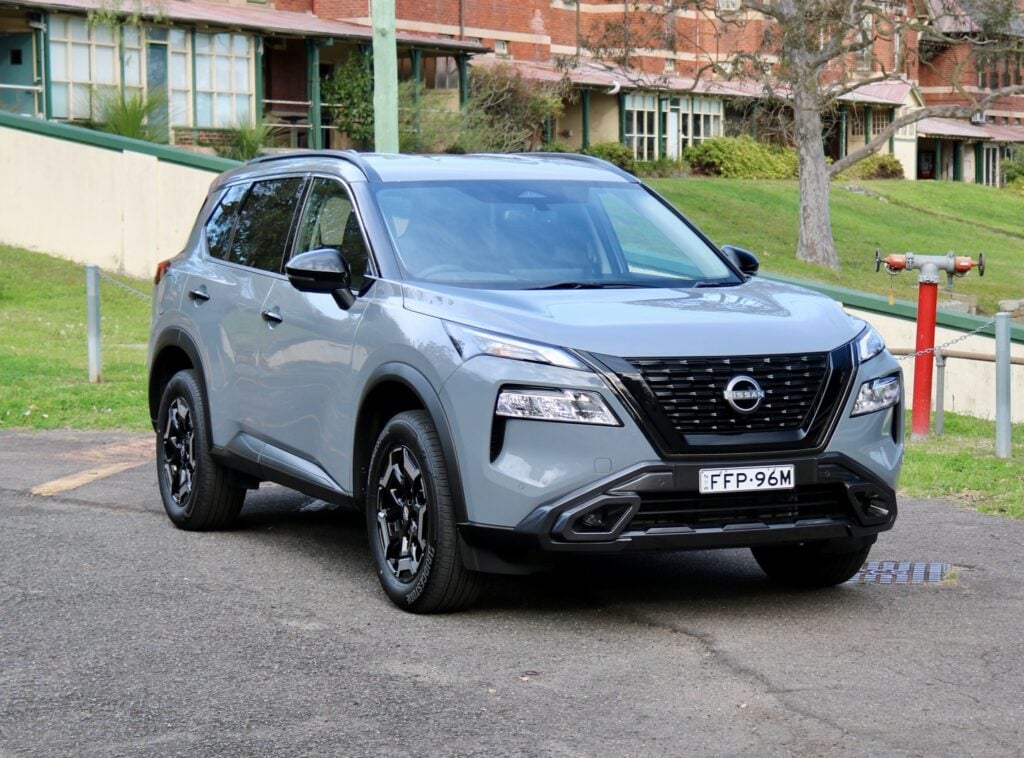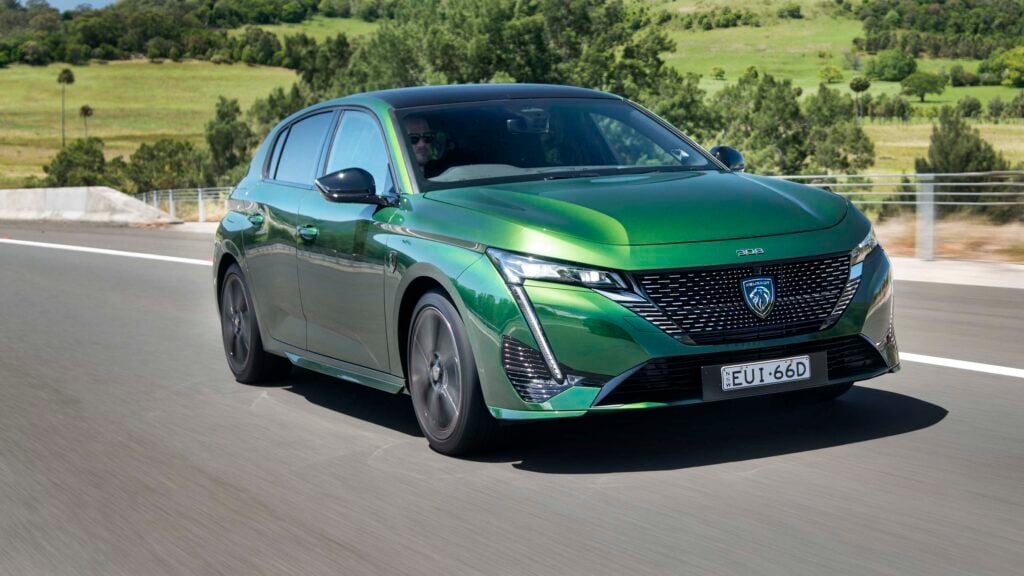The new Hyundai Genesis is the most expensive car the brand has produced but its slowest seller – with big aspirations.
WHAT IS IT A large, rear-wheel-drive V6 sedan – the sort of thing buyers have been running a mile from. Except that the Genesis is more about luxury and brand positioning than outright sales.
WHY WE’RE TESTING IT It’s just arrived has just gone on sale as the brand’s latest foray into luxury cars. The previous luxury Hyundai (the front-drive Grandeur) was a flop but Hyundai is hoping to get more people to experience its latest flagship luxury car.
MAIN RIVALS Hyundai would like to think it goes head to head with the BMW 5-Series and Mercedes-Benz E-Class; it’s even leased one of each so prospective owners can do a back-to-back test drive. But the reality is it’s likely to steal more sales from the Holden Caprice and others such as the Lexus ES.
SPECS Model: Hyundai Genesis Engine: 3778cc V6, dohc, 24v Max power: 232kW @ 6000rpm Max torque: 397Nm @ 5000rpm Transmission: 8-speed auto Weight: 1890-1995kg 0-100km/h: 6.5sec (claimed) Fuel economy: 11.2L/100km Price: $60,000 (base), $71,000 (Sensory), $82,000 (Ultimate)
THE WHEELS VERDICT Spacious, quiet and comfortable, but thirsty and with the wrong badge to upset the luxury status quo. PLUS: Big inside; loaded with equipment; comfortable; a decent brand statement MINUS: V6 thirsty and could do with more torque; it’s an expensive Hyundai
THE WHEELS REVIEW OUR first Australian taste of the Hyundai Genesis is from the back seat, where there’s acres of legroom and just enough headroom for taller adults. That’s good news for the hire car operators who have already shown a keen interest in the big four-door saloon.
But it’s the quality of the interior that is the biggest surprise. Decent (real) leather and a sumptuous folding armrest make the back pews a thoroughly pleasant place to be – and well up to the expectations of luxury buyers.
It’s also serenely quiet, with the exception of some tyre roar on coarser country roads.
But the interior isn’t impeccable. Some dash plastics have old school graining that lacks the sparkle of more upmarket stitching and softer touch finishes. And the otherwise well laid out buttons and controls get the job done without the tactility and elegance of the best of the luxury set. The high gloss wood also feels dated and, as prospective owners will find out, there are few choices when it comes to trims and interior colours.
But that’s part of the deal of doing a $60,000 large luxury car. Hyundai argues it needs to reduce model complexity to keep pricing sharp – even if the most expensive variant, the Ultimate, is an $82,000 proposition.
The sales pitch is you effectively get all the fruit of a large BMW or Mercedes for half the price – a loaded 5-Series for the price of a base 3.
Indeed, the level of standard kit is impressive. As well as the usual array of electric adjustments, auto on-offs and a Lexicon sound system, the Genesis gets a decent suite of crash avoidance technologies, including radar cruise control, autonomous braking, lane departure warning and a boot that opens automatically once the key is nearby (not even a wave of the foot!).
The more expensive Sensory ($71,000) adds blind spot warning and a carbon dioxide sensor to ensure the cabin has enough oxygen to keep the driver fresh, while the Ultimate ($82,000) picks up a panoramic sunroof, heated rear seats and doors that suck themselves closed, among other goodies.
Another key part of the sales pitch – especially for the hire car set – is five years or 75,000km of servicing, and a five-year unlimited kilometre warranty. Hyundai executives point to the high servicing costs – and associated owner frustration – of many German luxury cars.
But luxury is as much about the on-road experience as the toys and trinkets. The Genesis quickly asserts itself as a comfortable and composed tourer, helped in no part by extensive Australian tuning.
The near two-tonne rear-driver feels planted when thrusting out of tighter corners and is stable through faster ones. It’ll lean when pushed but the body is generally well controlled, save for some squirming if a bump arrives mid-way through a bend.
The standard Hankook 18-inch tyres on the base and Sensory models grip well enough, with the 19-inch Dunlops reserved for the Ultimate raising the threshold slightly.
With 232kW of power the 3.8-litre V6 is a willing performer and can get to 100km/h in 6.5sec, but it needs a load of revs on board to do its best.
There’s okay torque down low, but it’s not exceptional and lacks the effortless thrust of turbocharged Euro rivals. Thankfully the eight-speed auto takes some of the load and helps mask the late-arriving 397Nm peak (at 5000rpm), although it sometimes needs a decent dose of right foot to coax it down a ratio or two.
But it’s fuel use that most cruels the Genesis’ copy book. Claimed at 11.2L/100km it’s approaching V8 levels and is almost double some European rivals; we saw low 12s during a spirited country drive.
At least it only needs regular unleaded, unlike the premium brew that adds 10 percent to the fuel bills of those Euros.
For many, though, none of that will matter. The stylised H badge on the bootlid (the only Hyundai badge on the Genesis; the rest are Aston Martin-esque Genesis ‘wings’) will be enough to turn them off what is an ambitious project to prove what the once cheap and cheerful South Korean manufacturer can do.
It’s not perfect, but they could be pleasantly surprised next time they order a hire car.





